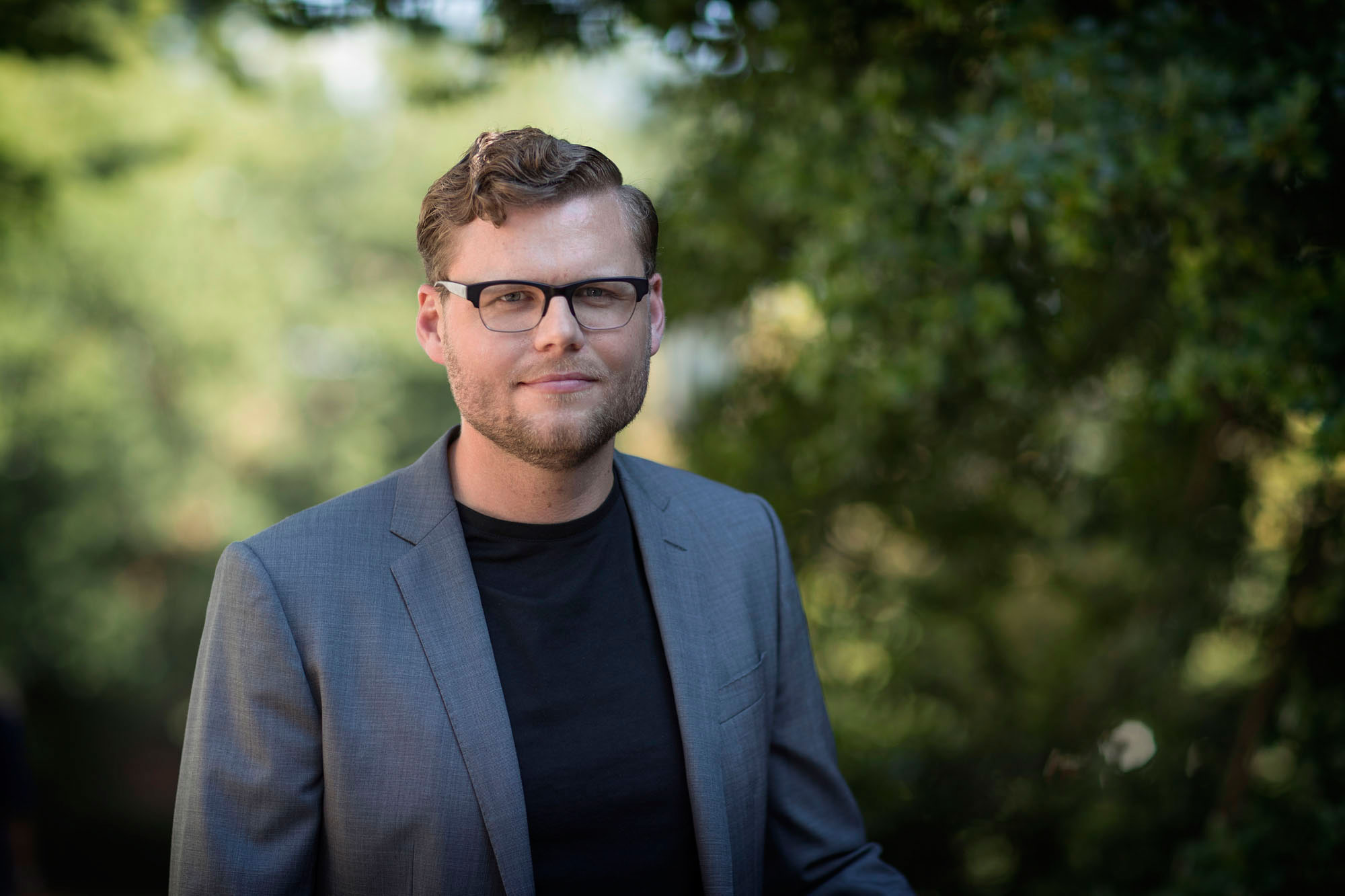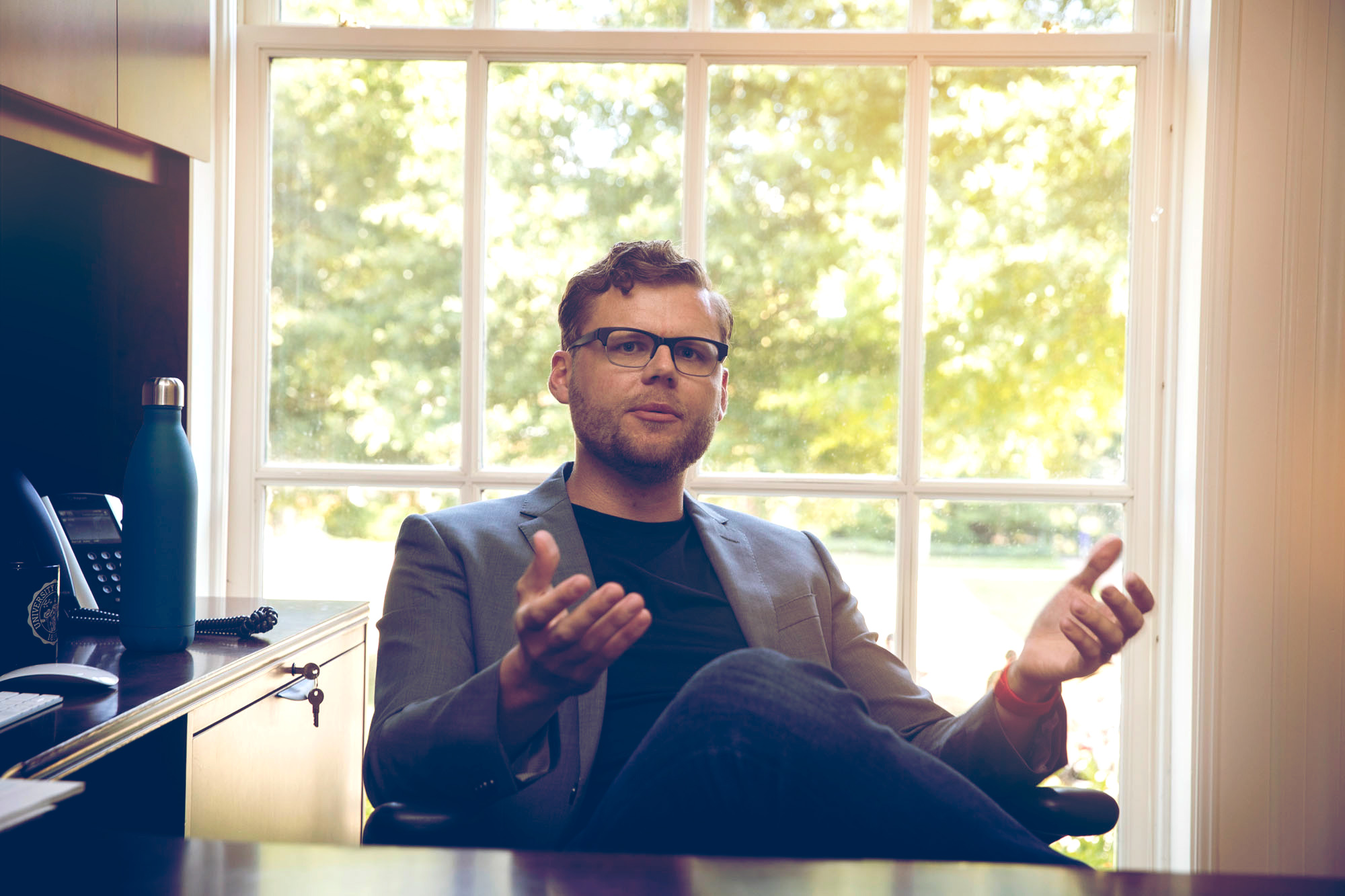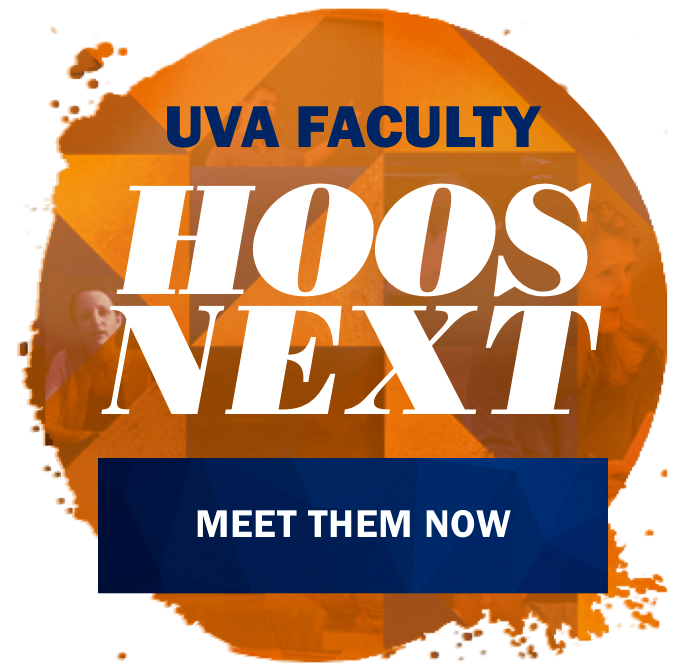If you’re wondering why you decided your last impulse purchase was a good idea, Derick Davis might have an answer for you.
Davis, beginning his first year as an assistant professor in the University of Virginia’s McIntire School of Commerce, teaches and researches consumer behavior, and particularly the psychology behind pricing and advertising. Why do consumers make certain choices? How might seemingly innocuous things – like word choice or word order – change their minds?
“It’s always interested me, even just as a consumer,” Davis said. “It’s a good fit for how I think about the world.”
Growing up in central Maine, Davis never imagined becoming a professor. He worked in his grandparents’ country store and in a local garage after school. His love of cars spurred him to study industrial engineering at the General Motors Institute (now Kettering University) in Flint, Michigan, where a co-op model called for alternating three months of study with three months of work as an engineering co-op.
“Toggling between theory and practice really appealed to me and helped to pay tuition,” said Davis, who was a first-generation college student.

Derick Davis never imagined becoming a professor. His life’s work has taken him from studying industrial engineering to teaching consumer psychology. (Photos by Dan Addison, University Communications)
As an engineering co-op, Davis worked for an automotive supplier and a biotech firm. Eventually, he decided to pursue an MBA and, with encouragement from an adviser, a Ph.D. in marketing.
As he entered academia, UVA was at the top of his list of potential employers.
“If you are looking for an incredible research institution with a long and storied history that is also a great place to live and raise a family, that list gets pretty small pretty quickly,” said Davis, who spent three years at the University of Miami before coming to Charlottesville. “UVA has always been where I wanted to be.”
Now that he has arrived on Grounds, Davis is directing his energy toward McIntire’s Integrated Core Curriculum, or ICE, which brings in corporate sponsors to help students understand real-world applications of the business practices they are learning. He is also continuing to research consumer behavior, using his findings to help students better understand the choices behind the marketing campaigns they study.
Below, Davis tells UVA Today about some of his most fascinating findings.
Q. One study you led showed that homophones change consumer behavior. How does that work?
A. In memory, there is an association between a word sound and a word meaning. In the case of homophones, you have two words that sound the same but have different meanings, such as “bye” and “buy.” When you hear just one of those words, both meanings are actually activated. So, consumers that are told something like “Don’t say goodbye to these deals,” are actually more likely to click on or think of the word “buy.” This is especially true if the consumer is distracted or under some sort of cognitive load.
Q. Are there any other ways that wording could significantly impact consumer behavior?
A. One project I was involved in studied how pricing order influences purchases. For retailers selling large quantities of something, we found that consumers favored ads listing quantity before price. So, “40 items for $30” is more appealing than “$30 for 40 items.”
Alliteration also has a significant effect. In speech, we are often spontaneously alliterative, because speaking a word that begins with a certain sound makes other words with that sound more accessible. Similarly, when we read an advertisement, we find alliterative pricing easier to process, such as “six sweatshirts for sixty dollars.” Appeal increases as the number of alliterative words increases linearly, because consumers misattribute the ease of processing the information to their judgment of liking the deal.
Q. What other consumer behaviors are you studying?
A. Right now, I am looking at the distinction between as-you-go goals and all-or-nothing goals. For example, if I am using a weight-loss plan or product to lose 10 pounds but only lose nine, I technically failed, but still lost nine pounds. That is an as-you-go goal. An all-or-nothing goal would be something like airline miles. If you need 25,000 loyalty points to get a free flight, getting 24,900 points will not get you anything.
Loyalty cards are another example we are looking at. It’s early, but we are finding some interesting differences between how consumers perceive, for example, a coffee loyalty card that gives them 10 percent off each purchase, versus a punch card that makes their 11th coffee free. Reactions seem quite different, even though the two are mathematically equivalent.
Q. What do you hope your students learn from your research and background in several different industries?
A. I have worked in three industries and seen how things work differently in each, and I think that exposure is helpful. That is a great benefit of the ICE program, as our students get to work with different corporate sponsors.
I have always admired Thomas Jefferson as a polymath with broad interests, and I think that approach is a great model for a university education. Many of my best research ideas come from reading books that are not technically in my field, that I read just because they interest me.
Editor’s note: This is another installment in an occasional series profiling members of a generational wave of new faculty members at the University of Virginia.
Media Contact
Article Information
September 22, 2016
/content/qa-consumer-behavior-guru-derick-davis-talks-science-behind-shopping


